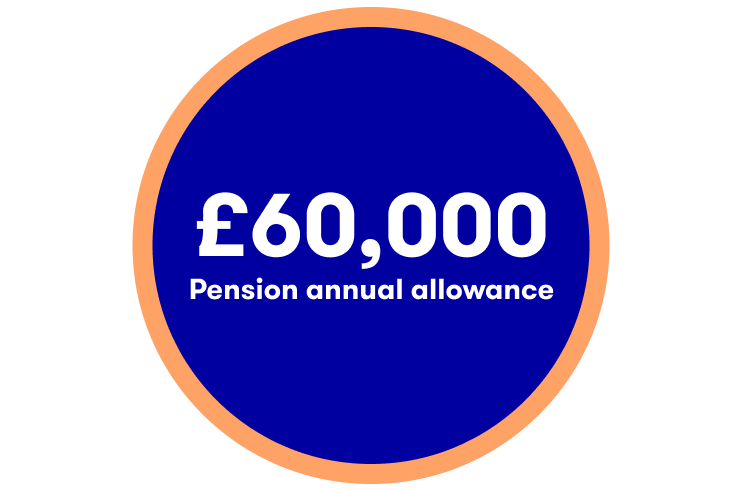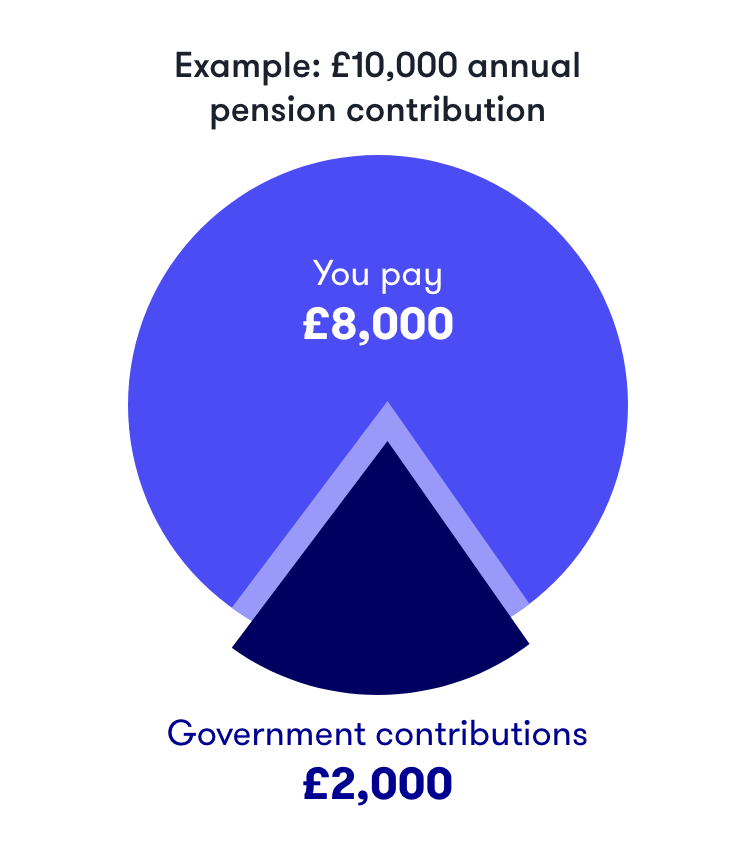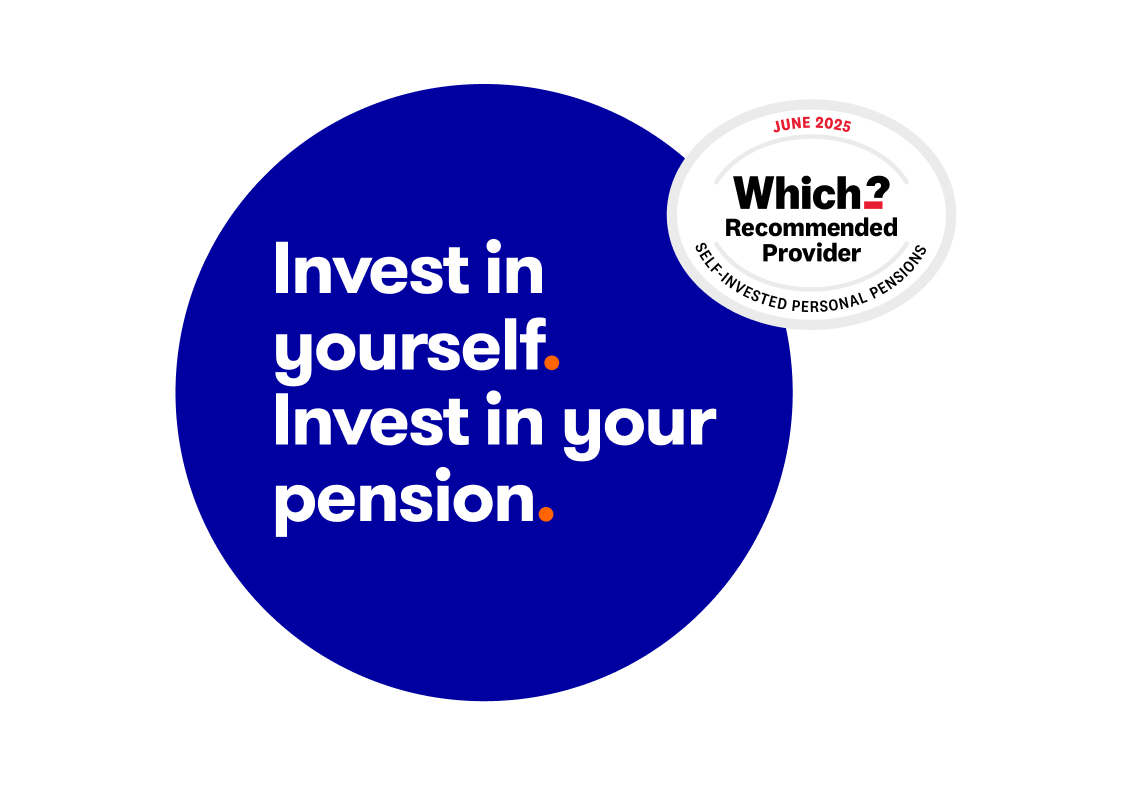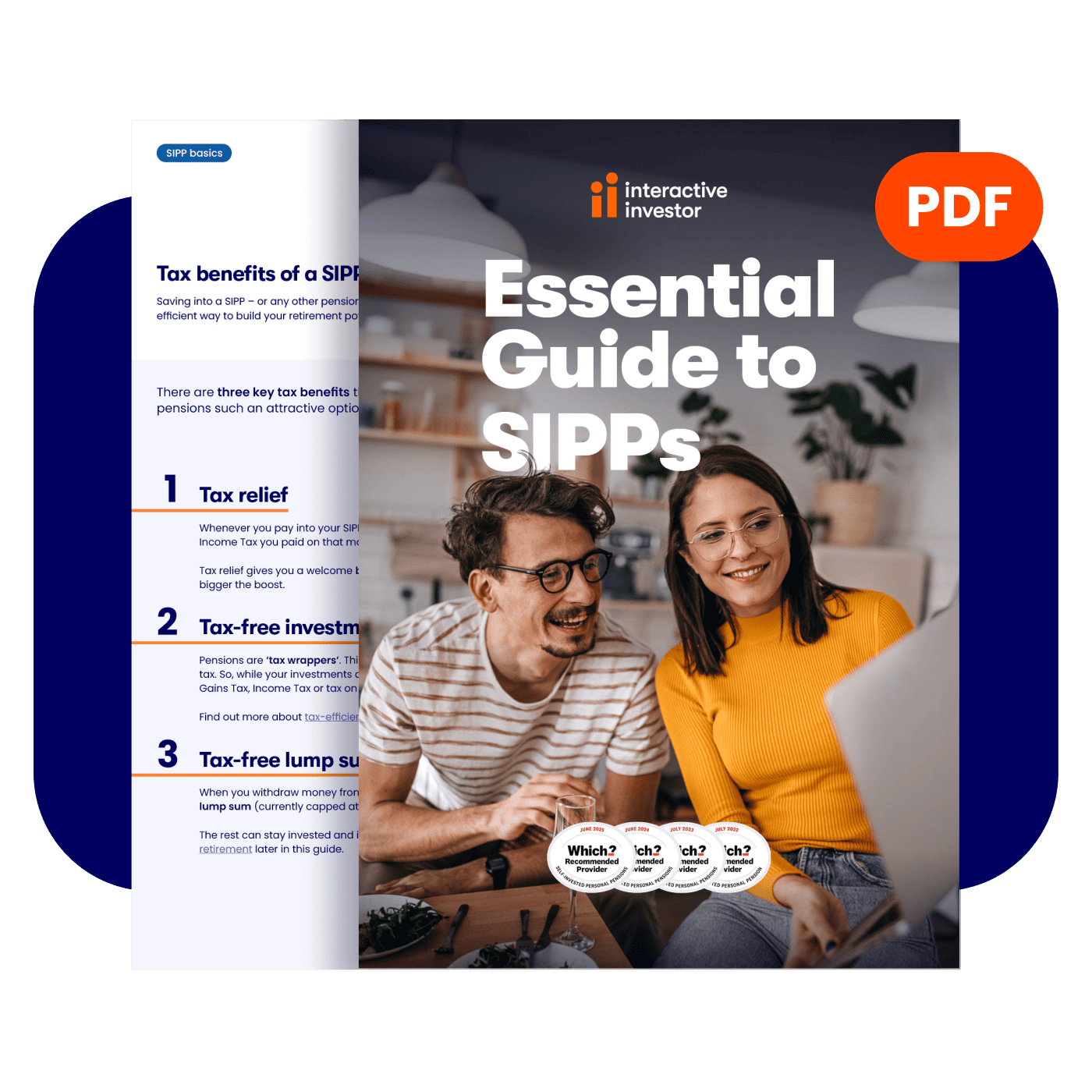ii SIPP
Important information: The ii SIPP is for people who want to make their own decisions when investing for retirement. As investment values can go down as well as up, you may end up with a retirement fund that’s worth less than what you invested. Usually, you won’t be able to withdraw your money until age 55 (57 from 2028). Before transferring your pension, check if you’ll be charged any exit fees and make sure you don't lose any valuable benefits such as guaranteed annuity rates, lower protected pension age or matching employer contributions. If you’re unsure about opening a SIPP or transferring your pension(s), please speak to an authorised financial adviser.
How much can I pay into a SIPP?
You can contribute 100% of your annual income to your SIPP each tax year, up to the maximum annual allowance of £60,000. This annual allowance includes personal contributions, employer contributions and tax relief.
Your personal contributions receive a top up from tax relief. The amount of tax relief you receive will match your highest rate of income tax.
Employer contributions count towards your £60,000 annual allowance but are not limited by your income.
If you do not have any earnings in a tax year, you can still contribute a maximum of £3,600 (£2,880 in personal contributions and £720 basic rate tax relief). Somebody else can also make this payment into your pension on your behalf.

Personal pension contributions: simple examples
Basic rate taxpayer (earning below £50,270)
James pays £8,000 into his SIPP.
His pension provider claims £2,000 tax relief (20% of the total contribution) for him automatically.
This increases his contribution to £10,000.

Higher rate taxpayer (earning above £50,270)
Stuart is a higher rate taxpayer which means he can receive 40% tax relief on his contributions.
He pays £8,000 into his SIPP and his provider claims £2,000 (20%) tax relief for him automatically.
He can claim back another £2,000 (20%) tax relief using his annual self-assessment tax return.
This means his £10,000 contribution has effectively cost him £6,000.
SIPP contributions once you start taking a pension income
When you start taking a taxable income from your SIPP you trigger the Money Purchase Annual Allowance (MPAA). This reduces your maximum annual allowance to £10,000.
For most people, this means you could contribute up to £8,000 net, with £2,000 basic rate tax relief added by HMRC to reach the £10,000 limit. Higher-rate taxpayers may be able to claim additional relief through self-assessment.
The MPAA will not be triggered if you only take a tax-free lump sum from your SIPP and do not take any other taxable income from your pension.
SIPP contributions for high earners
If you have an income of £200,000 or more, you may be subject to a tapered annual allowance. This reduces the amount you can pay into your SIPP that tax year and receive tax relief.
Two figures are important when determining whether you are affected – your threshold income and your adjusted income.
The calculations are complex but your threshold income is your annual income before tax, including salary, bonuses, dividend income, income from property and so on, but minus personal and employer pension contributions. Your adjusted income is your income before tax plus the value of any employer pension contributions.
Your annual allowance reduced by £1 for every £2 that your adjusted income exceeds £260,000.
If it reaches £360,000, you will be subject to the maximum £50,000 reduction in annual allowance. This means your annual allowance would be reduced to £10,000.
If your threshold income is below £200,000, the annual allowance taper will not be triggered.
| Annual Income | Annual Contribution Allowance |
| Up to £260,000 | £60,000 |
| £285,000 | £47,500 |
| £310,000 | £35,000 |
| £335,000 | £22,500 |
| £360,000 + | £10,000 |
Using carry forward to boost SIPP contributions
You may be able to increase the amount you can invest if you have not used your full allowance in any of the previous three years. This is known as the carry forward rule.
To carry forward, you MUST have:
- Been a member of a pension scheme in each tax year from which you carry forward.
- Used your full annual allowance in the current tax year.
- Contributed less than the annual allowance in one or more of the last three tax years (including personal and employer contributions).
- Earned at least the amount you want to contribute in this tax year, including any unused allowance you want to carry forward, if you are making personal contributions.
If you are eligible, you use up any unused annual allowance from the earliest year first.
You cannot use carry forward rules once you have triggered the MPAA.
How to make SIPP contributions
You can make personal contributions and/or employer contributions to your SIPP.
You can make a personal contribution to your SIPP via:
- Instant bank payment.
- Monthly Direct Debit. You can set up regular monthly contributions using your online account.
- Debit card. You can make one-off contributions using your online account.
- Internal transfer from your Trading Account. You can contribute money from your Trading Account using your online account.
- Bank transfer. To make a personal contribution by bank transfer you will need to complete and return an ii SIPP Contribution Form. Making contributions by bank transfer will take longer to reach your account. Please note, it could take up to 10 working days to apply the contribution to your SIPP. However, during busy periods, the time could vary. If you intend to contribute approaching tax year end, you should refer to the tax year end deadlines when they are published, these will be available on our website.
Employer contributions to your SIPP
A SIPP is a personal pension but you can still ask your employer to contribute to it.
If you arrange a single or regular contribution via your Employer, you accept that the ii SIPP is not an Employer, Workplace or Auto Enrolment Pension. The ii SIPP is a Personal arrangement between you and Interactive Investor.
Interactive Investor will accept and process contributions from Employers on the understanding you are solely responsible for agreeing, arranging and monitoring contributions are paid.
To find out more about how to set up employer contributions to your SIPP and the tax relief you could claim, read our guide to employer contributions.
By completing and returning an ii SIPP Contribution Form, you can arrange:
- Single employer contributions to your SIPP. Please note, it could take up to 10 working days to apply the contribution to your SIPP. However, during busy periods, the time could vary. If you intend to contribute approaching tax year end, you should refer to the tax year end deadlines when they are published, these will be available on our website
- Monthly employer contributions to your SIPP
How much tax relief will I get?
The amount of SIPP tax relief you can receive depends on your income tax band.
Your provider will always claim 20% tax relief for you as standard.
It usually takes 6-11 weeks to receive the tax reclaim from HMRC.
If you pay higher or additional rate tax, you can claim the outstanding relief you’re entitled to by completing a self-assessment tax return.

